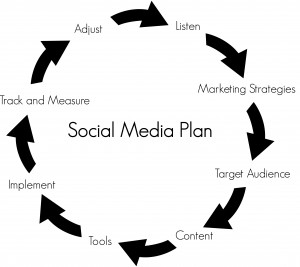What’s the difference between a social media plan and a public relations plan? It’s not only about applying different tools.
How to make a social media plan specific and attainable? It’s not only about listing creative ideas.
For my last post this semester at NYU, I will give some advice on drafting a real social media plan, based on my hands-on experience.
1. Background Analysis.
Don’t only rely on the organization’s official website. You need more objective descriptions from websites like Wikipedia.
2. Research:
Besides content analysis, do some surveys actively. Your social media accounts are great places to give a poll.
3. Social Media Objectives:
Break it down to at least two points, rather than repeat the business objective with social media jargon.
4. Audiences:
Categorize the audiences to be primary v.s. secondary, or long-term v.s. short-term.
5. Key Messages:
It’s not separated from other steps. An insightful way is to find the unique selling points of the organization, then transfer them into key messages.
6. Strategies:
Talk to your colleagues and listen to their ideas. Two brains will always be better than one.
Be neither too general nor too detailed. Some feasible options include “multiple media”, “campaigns” or “social media conversations”.
7. Tactics:
Timeline is essential, which can be elaborated in a chart. Be creative, instead of copying plain words from existing social media plans.
8. Measurement:
It’s easier and clearer to correspond to the lists of social media objectives.
As a conclusion, three key points you should remember when making a social media plan are: Brevity, bullets and correspondence. If you still want an instructive guide, please check out http://www.clarkcommunication.com/PRTips/Creating_PR_Plan.php, which helped me a lot while I compiled my own social media plan.
Hands-on experience is most beneficial. Do you have any tips based on your own experience?


